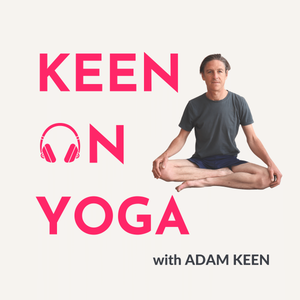
Keen on Yoga Podcast
Adam Keen
- 46 minutes 21 secondsEp 206 Adam & Theresa Keen – New Year Reflections: A Yoga Journey
Ep 206 Adam & Theresa Keen – New Year Reflections: A Yoga Journey
In this New Year's roundup episode, Adam and Theresa reflect on their experiences over the past year, discussing their highlights, challenges, and learning moments. They share insights on their travels, culinary adventures, and personal growth, while also looking ahead to the future and what they hope to achieve in the coming year.
Adam & Theresa discuss:
- · Meeting students during retreats was a highlight.
- · Success in teaching is appreciated more after experiencing failure.
- · Travel logistics can be overwhelming without a base.
- · Online criticism can be difficult to navigate.
- · Driving in Chiang Mai was a significant learning experience.
- · Traveling can be challenging and not always glamorous.
- · Spending more time in the UK would be grounding.
- · Puglia was a surprising and enjoyable destination.
- · The best meal was a Middle Eastern breakfast in Dubai.
- · Streamlining travel schedules is a goal for next year.
Listen on Podcast
Apple podcast: https://podcasts.apple.com/us/podcast/keen-on-yoga-podcast/id1509303411
Spotify: https://open.spotify.com/show/5iM9lcw52JskHUZ2eFvVxN
Watch Episodes on YouTube:
https://www.youtube.com/@keenonyoga
Support Keen on Yoga:
Subscribe, like and share our videos
Buy us a coffee: https://www.buymeacoffee.com/infoRf
Patrons €10 per month: https://www.keenonyoga.com/patrons/
Follow Adam
Website: www.keenonyoga.com
Instagram: @keen_on_yoga | @adam_keen_ashtanga
5 January 2025, 12:59 am - 1 hour 9 minutesEp 205 Daniela Bevilacqua – Sadhus Understanding of Embodied Practices
Ep 205 Daniela Bevilacqua – Sadhus Understanding of Embodied Practices
www.yogicstudies.com/daniela-bevilacqua | IG @dhanya_83
Daniela Bevilacqua discusses her new book 'From Tapas to Modern Yoga' and shares her unique experiences living with sadhus in India. The dialogue explores the complexities of sadhu culture, the significance of tapasya, the intricacies of sampradaya and lineages, and the role of yoga and kriyas in their practices.
Listen on Podcast
Apple podcast: https://podcasts.apple.com/us/podcast/keen-on-yoga-podcast/id1509303411
Spotify: https://open.spotify.com/show/5iM9lcw52JskHUZ2eFvVxN
Watch Episodes on YouTube:
https://www.youtube.com/@keenonyoga
Support Keen on Yoga:
Subscribe, like and share our videos
Buy us a coffee: https://www.buymeacoffee.com/infoRf
Patrons €10 per month: https://www.keenonyoga.com/patrons/
Follow Adam
Website: www.keenonyoga.com
Instagram: @keen_on_yoga | @adam_keen_ashtanga
Key Points
· Daniela's book offers a unique perspective on sadhus.
· Living with sadhus provides insights into their practices.
· Initiation into sadhu life is complex and varies by individual.
· Sampradaya and lineages play a crucial role in sadhu identity.
· Tapasya is central to the ascetic practices of sadhus.
· Sadhus often serve as fatherly figures for abandoned children.
· Yoga for sadhus focuses primarily on meditation.
· Kriyas are significant practices that go beyond physical postures.
· Faith and belief systems vary among sadhus and their followers.
· Visiting a Mela can be a profound experience for outsiders.
29 December 2024, 4:00 am - 39 minutes 10 secondsEp 204 Adam Keen – The Power of Intentionality
Ep 204 Adam Keen – The Power of Intentionality
"Embrace things as they are."
"We don't lack anything."
Adam delves into the concept of intentionality within spiritual practice, particularly in the context of yoga. He emphasizes the importance of transforming mundane routines into meaningful rituals, the role of intentionality in achieving clarity and presence, and the balance between desire and appreciation. Adam discusses the necessity of faith, effort, and reflection in spiritual growth, as well as the courage required to face reality and embrace life as it is. He concludes with thoughts on connecting with others and finding authenticity in one's experiences.
Adam discusses:
· Intentionality is crucial for spiritual practice.
· Transforming routines into rituals adds meaning to life.
· Enlightenment is about finding meaning in everyday actions.
· The mindset behind practice is more important than the practice itself.
· Removing obstructions leads to clarity and presence.
· Desire should not overshadow appreciation of the present moment.
· Building intentionality involves acceptance and letting go.
· Faith and effort are essential for spiritual growth.
· Memory and reflection enhance intentionality.
· Facing reality is a challenge that requires courage.
Listen on Podcast
Apple podcast: https://podcasts.apple.com/us/podcast/keen-on-yoga-podcast/id1509303411
Spotify: https://open.spotify.com/show/5iM9lcw52JskHUZ2eFvVxN
Watch Episodes on YouTube:
https://www.youtube.com/@keenonyoga
Support Keen on Yoga:
Subscribe, like and share our videos
Buy us a coffee: https://www.buymeacoffee.com/infoRf
Patrons €10 per month: https://www.keenonyoga.com/patrons/
Follow Adam
Website: www.keenonyoga.com
Instagram: @keen_on_yoga | @adam_keen_ashtanga
22 December 2024, 4:00 am - 53 minutes 26 secondsEp 203 Ramesh Bjonnes – The Intersection of Tantra and Vedic Traditions
Ep 203 Ramesh Bjonnes – The Intersection of Tantra and Vedic Traditions
"Everything has the possibility of yoga."
Ramesh Bjonnes is a Tantric scholar and author with a personal practice for over 50 years. He is the co-founder of the Prama Institute and the Director of the Prama Wellness Center. He lived and taught as a yogic monk for some years after studying in Nepal and India. He studied Ayurveda at California College of Ayurveda and is a certified yoga detox therapist from the Ananda Marga Wellness Center in Cebu, Philippines. He is the author of five books, including A Brief History of Yoga (InnerWorld), Sacred Body, Sacred Spirit (InnerWorld) and Tantra: The Yoga of Love and Awakening (Hay House India). He lives with his wife Radhika and Juno, a Great Pyrenees, in the Blue Ridge Mountains of North Carolina.
In this conversation Adam and Ramesh discuss:
- · Ramesh Bjonnes presents a non-traditional view of yoga history.
- · The Two River Theory suggests yoga's roots in both Vedic and Shaiva traditions.
- · Tantra is often misunderstood in the West, conflated with Neo-Tantra.
- · Anandamurti's teachings challenge conventional views on yoga and history.
- · The Pashupati seal may indicate ancient yogic practices.
- · Mantra plays a crucial role in Tantric practices and spiritual awakening.
- · Ramesh emphasizes the importance of oral traditions in yoga.
- · Experiences of clairvoyance can arise from deep meditative states.
- · Yoga practices are not solely Vedic but include various traditions.
- · Ramesh's work blends health, yoga, and holistic living.
Listen on Podcast
Apple podcast: https://podcasts.apple.com/us/podcast/keen-on-yoga-podcast/id1509303411
Spotify: https://open.spotify.com/show/5iM9lcw52JskHUZ2eFvVxN
Watch Episodes on YouTube:
https://www.youtube.com/@keenonyoga
Support Keen on Yoga:
Subscribe, like and share our videos
Buy us a coffee: https://www.buymeacoffee.com/infoRf
Patrons €10 per month: https://www.keenonyoga.com/patrons/
Follow Adam
Website: www.keenonyoga.com
Instagram: @keen_on_yoga | @adam_keen_ashtanga
15 December 2024, 4:00 am - 29 minutes 6 secondsEp 202 Adam Keen – Exploring the Roots of Vinyasa
Ep 202 Adam Keen – Exploring the Roots of Vinyasa
"Vinyasa is the root of modern yoga."
www.keenonyoga.com | @adam_keen_ashtanga
Adam explores the foundational aspects of Vinyasa and its significance in modern yoga, tracing its roots back to Krishnamacharya. He discusses the evolution of yoga practices, the importance of breath and the diaphragm, and the contrast between ritual space and flow states in yoga. Adam emphasizes the need to understand the original intentions behind yoga practices and how they have transformed over time.
Key Points
· Vinyasa is essential to understanding modern yoga.
· Krishnamacharya was a pivotal figure in yoga's evolution.
· Modern yoga often misinterprets the original concept of vinyasa.
· Breath and diaphragm play crucial roles in yoga practice.
· Rituals create a sacred space for transformation.
· Movement and stillness are interconnected in yoga.
· Vinyasa should focus on breathing rather than just flowing.
· Understanding the diaphragm enhances yoga practice.
· Yoga shapes require internal pressure to be effective.
· The modern flow state may detract from yoga's original purpose.
8 December 2024, 4:05 am - 1 hour 3 minutesEp 201 Prasad Rangnekar - Yoga and Strength, The Sacred Body: Weight Training as Sadhana
www.prasadrangnekar.com | @yogaprasad_institute
“You can’t demonstrate a calm mind, but you can demonstrate a strong body
Key Topics
· Blessing the dumb bells
· Asana v yoga
· Why is the yoga community against strength training
· The shift from aerobics in the 90s
· The circle from East to West and back
· The history of body building in yoga
· Vanity of body
· Will asana get worse for building muscle?
· Andropause
· Giving attention to the body without being attached to the body
1 December 2024, 4:00 am - 36 minutes 16 secondsEp 200 Adam Keen – Reflections on 200 Episodes: A Journey Through Yoga
Ep 200 Adam Keen – Reflections on 200 Episodes: A Journey Through Yoga
www.keenonyoga.com | @adam_keen_ashtanga
"I felt like I was coming home."
In this reflective episode marking the 200th podcast, Adam shares his personal journey through yoga, mental health struggles, and the influence of Sharath and the Mysore tradition. He discusses the evolution of his practice, the challenges of teaching, and the balance between personal experience and traditional methods. The conversation highlights the importance of community, authority in practice, and the ongoing journey of self-discovery in yoga.
Key Points
Yoga became a healing tool for my mental health.
The journey to yoga started with a search for meaning.
Ashtanga practice shifted my understanding of yoga.
Mysore offered a sense of authority and accountability.
Teaching requires adapting methods to different students.
The modern yoga landscape is saturated with teachers.
Personal experience in yoga is essential for authenticity.
Sharath's influence shaped my understanding of practice.
Navigating the balance between tradition and personal experience is challenging.
Community support is vital in the yoga journey.
23 November 2024, 6:00 am - 28 minutes 39 secondsEp 199 Adam Keen – In Memory of Sharath Jois: A Personal Reflection
"It's a time for us all, very sad."
www.keenonyoga.com | @adam_keen_ashtanga
Adam reflects on the profound impact of Sharath Jois on his Ashtanga practice and the yoga community. He shares personal anecdotes from his experiences in Mysore, exploring the emotional complexities of practicing under Sharath's guidance, the challenges of teaching, and the legacy left behind. Adam navigates through feelings of admiration, disappointment, and unresolved emotions, ultimately expressing gratitude for the lessons learned and the community built around their shared practice.
Key Points
· Sharath was a pivotal figure in the Ashtanga community.
· Practicing in Mysore evokes deep emotional experiences.
· The journey of growth in Ashtanga is often filled with challenges.
· Teaching in Mysore requires navigating complex relationships.
· Expectations can lead to feelings of dissatisfaction in practice.
· The pressure of performance in Mysore can be overwhelming.
· Sharath's unique teaching style fostered personal growth.
· Conflicted emotions about legacy are common among practitioners.
· Community support is essential in the healing process.
· Moving forward requires reconciling past experiences with present realities.
15 November 2024, 6:00 am - 33 minutes 49 secondsEp 198 Adam Keen – Surrendering to Your Yoga Teacher – Is it a Good Idea?
"The rules are just the wrapping paper."
www.keenonyoga.com | @adam_keen_ashtanga
Adam discusses the complex themes of trust and surrender within the context of yoga practice, particularly Ashtanga. He emphasizes the importance of maintaining personal autonomy and critical thinking when engaging with teachers and the practice itself. Adam warns against the dangers of surrendering blindly to a teacher's authority and advocates for a more inclusive and supportive environment in yoga classes. He highlights the need for trust to be built incrementally and the significance of creating space for individual expression and growth in yoga practice.
Key Points
· Trust should never be given blindly to a teacher.
· Surrendering one's autonomy can lead to negative experiences.
· The teacher-student relationship should be supportive and inclusive.
· Commitment to practice does not equate to surrendering to authority.
· Space in yoga allows for personal growth and self-exploration.
· Adjustments should be approached with caution and respect for individual limits.
· Trust is built through consistent and supportive interactions.
· The Ashtanga method is a tool for personal development, not a strict dogma.
· Critical thinking is essential in the practice of yoga.
· The rules of yoga are guidelines, not absolute mandates.
10 November 2024, 4:12 am - 59 minutes 59 secondsEp 197 Daniel Simpson – Addiction in Yoga: Striving for More
"Asana is beneficial, but context is everything."
www.truthofyoga.com | @danielcsimpson
The Truth of Yoga Course Nov 2024
Adam and Daniel explore the complexities of modern yoga practice, particularly the push for performance in asana and the confusion surrounding its original purpose. They discuss the emotional journey that practitioners undergo, the disconnect between asana and traditional yoga philosophy, and the addictive nature of striving for progress. The dialogue emphasizes the importance of understanding objectives in practice and the need for emotional awareness in yoga, ultimately advocating for a reframing of how yoga is taught and experienced. They also touch on the modern yoga landscape, the commodification of yoga, and the search for deeper meaning beyond superficial happiness.
Key Points
· Modern yoga often emphasizes performance over original objectives.
· The confusion in asana practice stems from a lack of clear aims.
· Asana was originally about sitting comfortably, not performing shapes.
· Emotional processes are integral to the yoga experience.
· Striving in practice can lead to addiction and desensitization.
· Progress in yoga is often perceived linearly, which is misleading.
· Conditioning affects how we approach yoga and our expectations.
· Advanced asanas do not necessarily correlate with emotional well-being.
· The pursuit of satisfaction in yoga can lead to suffering.
· Reframing yoga practice can enhance emotional awareness and understanding. Reframing Ashtanga Yoga can lead to a deeper understanding of its benefits.
· Context is crucial in evaluating the practice of asana.
· Yoga originally aimed for a state of being, not just physical practice.
· Honesty in practice is essential for growth and understanding.
· Cultural perspectives on shame and guilt influence modern yoga practices.
· The modern yoga landscape often prioritizes performance over true practice.
· Finding meaning in yoga goes beyond achieving physical postures.
· The commodification of yoga can detract from its philosophical roots.
· Self-identity plays a significant role in how we approach yoga.
· True contentment in yoga comes from understanding and relationships.
3 November 2024, 4:00 am - 39 minutes 30 secondsEp 196 Adam Keen – The Struggles of a Modern Yoga Teacher
Ep 196 Adam Keen – The Struggles of a Modern Yoga Teacher
www.keenonyoga.com | @adam_keen_ashtanga
Adam explores the struggles faced by modern yoga teachers. He discusses the complexities of defining the role of a yoga teacher, the pressures and expectations from students, and the crisis of integrity that can arise in the profession. Adam emphasizes the importance of holding space for students and the emotional landscape of yoga practice, while also addressing the challenges of teaching in modern studios and the need for professionalism. He concludes by reflecting on the ambivalence of student expectations and the complexities of being a yoga teacher in today's world.
Key Notes
· The modern yoga teacher faces unique challenges and expectations.
· Defining the role of a yoga teacher is complex and ambiguous.
· Teachers often feel pressure to meet student expectations.
· Integrity can be compromised in the pursuit of student retention.
· Holding space for students is a crucial aspect of teaching.
· The structure of modern yoga studios can hinder teacher-student relationships.
· Emotional dynamics play a significant role in yoga practice.
· Professionalism is essential for yoga teachers to be taken seriously.
· Students often have conflicting expectations of their teachers.
· The journey of a yoga teacher is filled with both rewards and challenges.
27 October 2024, 4:00 am - More Episodes? Get the App
Your feedback is valuable to us. Should you encounter any bugs, glitches, lack of functionality or other problems, please email us on [email protected] or join Moon.FM Telegram Group where you can talk directly to the dev team who are happy to answer any queries.
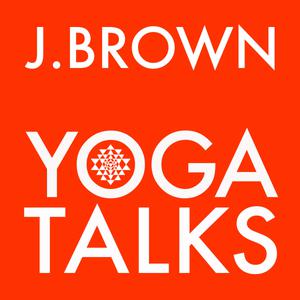 J. Brown Yoga Talks
J. Brown Yoga Talks
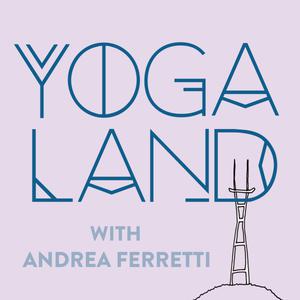 Yogaland Podcast
Yogaland Podcast
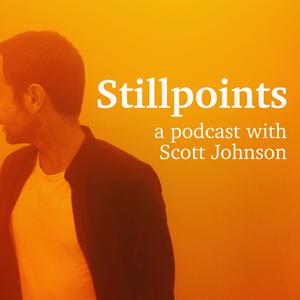 Stillpoints: A Podcast with Scott Johnson
Stillpoints: A Podcast with Scott Johnson
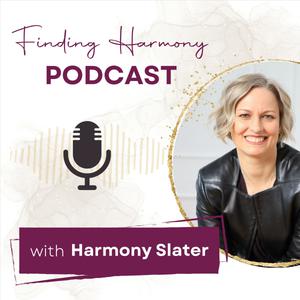 Finding Harmony Podcast
Finding Harmony Podcast
 Let's Talk Yoga
Let's Talk Yoga
 Ashtanga Dispatch Podcast
Ashtanga Dispatch Podcast